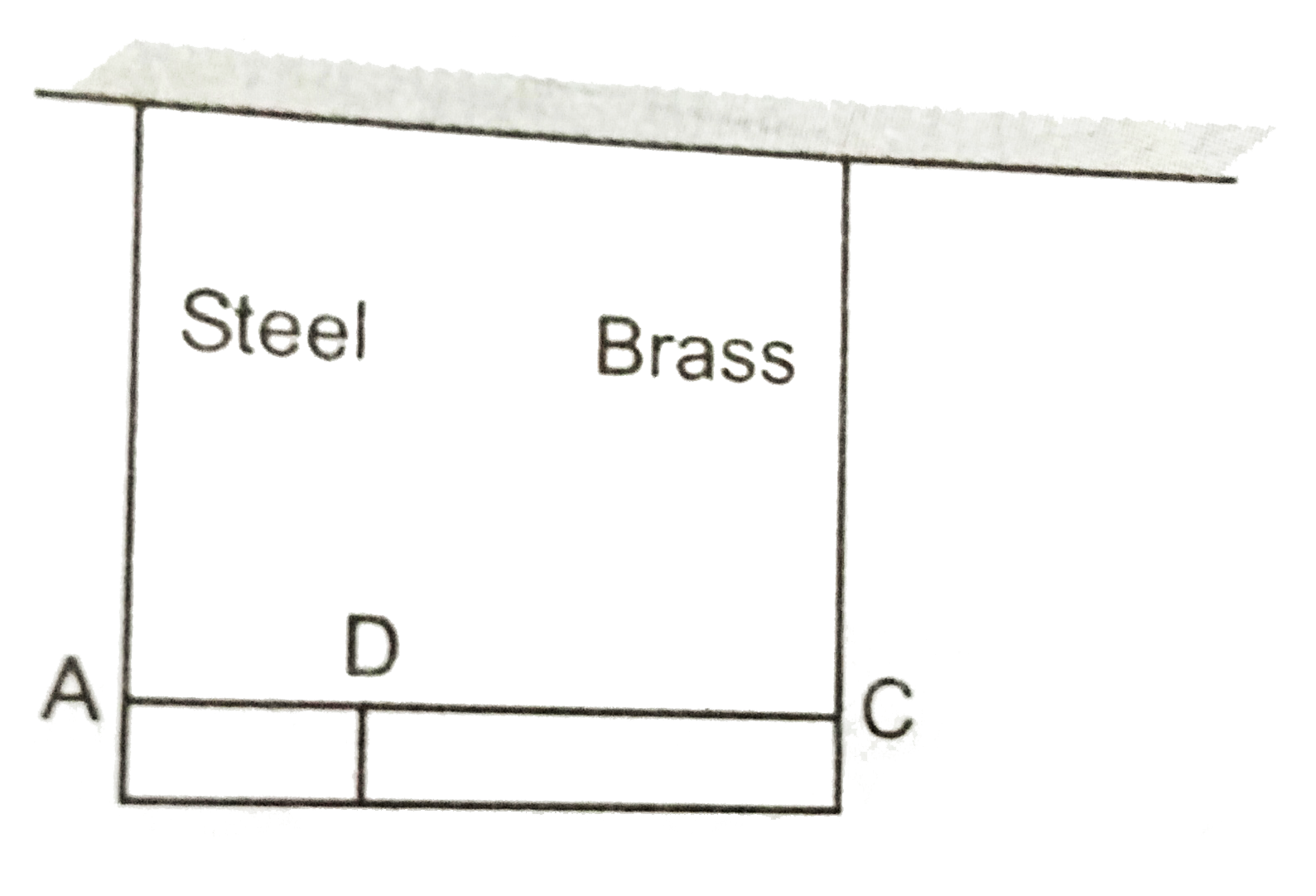A thin rod of negligible mass and area of corss-section 2×10−6m2, suspended vertically from one end, has a length of 0.5m at 200∘C. The rod is cooled to 0∘C, but length is kept same by attaching a mass at the lower end. The value of this mass is: (Yound's modulus=1011N/m2, coefficient of linear expansion = 10−5K−1).
The correct Answer is:(i)4.0kg<br>(ii)0.001J
mgA=YαΔθ⇒m=YαΔθAg=4kg.
U=F2L2AY=10−3J
Topper's Solved these Questions
- ELASTICITY AND VISCOCITYBook:RESONANCE ENGLISHChapter:ELASTICITY AND VISCOCITYExercise:Exercise- 3 PART - IV
Explore 9 Videos
- DAILY PRACTICE PROBLEMSBook:RESONANCE ENGLISHChapter:DAILY PRACTICE PROBLEMSExercise:dpp 92 illustration
Explore 2 Videos
- ELECTROMAGNETIC INDUCTIONBook:RESONANCE ENGLISHChapter:ELECTROMAGNETIC INDUCTIONExercise:Exercise
Explore 43 Videos
Similar Questions
A thin rod of negligible mass and a cross-section of 2×10−6m2 suspended vertically from one end, has a length of 0.5m at 200∘C. The rod is cooled at 0∘C, but prevented from contracting by attaching a mass at the lower end. The value of this mass is : (Young's modulus =1011N/m2, Coefficient of linear expansion 10−5K−1andg=10m/s2):
View SolutionAn thin rod of negligible mass and area of cross - section 4×10−6m2, suspended vertically from one end, has a length of 0.5 m at 100∘C. The rod is cooled to 0∘C but prevented from contracting by attaching a mass at the lower end. The value of this mass is
(Given, coefficient of linear expansion is 10−5∘C−1, Young's modulus is Y=1011Nm−2andg=10ms−2)
View SolutionA thin rod of negligible mass and area of cross section S is suspended vertically from one end. Length of the rod is L0 at T∘C . A mass m is attached to the lower end of the rod so that when temperature of the rod is reduced to 0∘C its length remains L0 Y is the Young’s modulus of the rod and α is coefficient of linear expansion of rod. Value of m is :
View SolutionA wire of length 1 m and area of cross section 2×10−6m2 is suspended from the top of a roof at one end and a load of 20 N is applied at the other end. If the length of the wire is increased by 0.5×10−4m, calculate its Young’s modulus (in 1011N/m2).
View SolutionThe pressure that has to be applied to the ends of a steel wire of length 10cm to keep its length constant when its temperature is raised by 100∘C is : (For steel Young's modulus is 2×1011Nm−2 and coefficient of thermal expansion is 1.1×10−5K_1)
View SolutionThere is same change in length when a 33000 N tensile force is applied on a steel rod of area of cross-section 10−3m2 . The change of temperature reuired to produce the same elongation, if the steel rod is heated , if (The modulus of elasticitay is 3×1011N/m2 and the coefficient of linear expansion of steel is 1.1×10−5/∘C).
View SolutionTwo wires have identical lengths and areas of cross-section are suspended by mass M. Their Young's modulus are in the ratio 2:5.
View SolutionA uniform steel wire of cross-sectional area 0.20mm2 is held fixed by clamping its two ends. Find the extra force exerted be each clamp on the wire if the wire is cooled from 1000C→0oC. Young's modulus of steel =2.0×1011Nm−2. Coefficient of linear expansion of =1.2×10−5C−1.
View SolutionA light rod AC of length 2.00 m is suspended from the ceiling horizontally by means of two vertical wires of equal length tied to its ends. One of the wires is made of steel and is of cross-section 10−3m2 and the other is of brass of cross-section 2×10−3m2. The position of point D from end A along the rod at which a weight may be hung to produce equal stress in both the wires is [Young's modulus of steel is 2×1011Nm2 and for brass is 1×1011Nm−2]

View SolutionA steel rod of length 1m is heated from 25∘to75∘C keeping its length constant. The longitudinal strain developed in the rod is ( Given, coefficient of linear expansion of steel = 12×10−6/∘C).
View Solution

